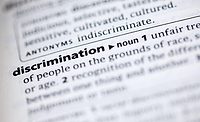Managing Post-Pandemic Workplace Fallout

Over the past few months we’ve seen millions of employees furloughed or laid off as the COVID-19 pandemic spread across our country. Job losses occurred in almost all industries, including employers big and small. For example, the hospitality industry reported 83% of employers cut jobs and 63% used furloughs. Furloughed employees with hopes of soon returning to their old jobs may now see their furloughs converted to permanent layoffs.
It’s virtually certain that coronavirus and COVID-19-related layoffs are going to happen. In one survey, 32% of chief financial officers said they believe that there will be more job cuts. That observation was confirmed by Dan Lovine, head of Oxford Economic Location Strategies, who was the lead researcher on the project. The research also found that 52% of small businesses expect to close within six months. That equates to 14 million businesses.
In an effort to weather the economic storm, most utilized employee furloughs and layoffs. The two are similar in effect, but furloughs are generally viewed as temporary losses of employment with an intent to have the employee return to work. Layoffs, on the other hand, normally connote a more permanent separation of employment.
Reopening Issues
Throughout the COVID-19 pandemic, the Centers for Disease Control and Prevention (CDC), the U.S. Department of Labor (DOL), the Occupational Safety and Health Administration (OSHA), state governments, and local health agencies issued and revised guidelines and recommendations for prevention of workplace exposure to COVID-19.
As businesses reopen, it’s imperative that they have in place all measures of prevention recommended by the various authorities, to the fullest extent possible. Failure to take these steps will potentially expose employees and customers to infection. It could provide the basis for DOL and/or OSHA charges, as well as potential lawsuits.
Workers’ Compensation Claims
Employee claims of work-related infections are likely to be handled as workers’ compensation claims. However, because of the serious problems with proving the infection was contracted in the workplace, such claims may be dismissed. California, as the result of a recent executive order from Gov. Gavin Newsom, has decided to provide a rebuttable presumption that the infection is work-related for workers’ compensation coverage. Other states have taken a similar position.
Afraid to Return
An additional issue likely to arise is the refusal of furloughed employees to return to work for fear of contracting the virus. Such a refusal raises several potential legal considerations.
The employee may have an underlying medical condition or be of an age that makes them particularly vulnerable. In addition, the anxiety that fear of infection causes could constitute a “disability” under the Americans with Disabilities Act, as amended. That would obligate the employer to consider reasonable accommodation of the employee’s anxiety, such as a leave of absence.
As you can see, a refusal to return is not as clear cut a circumstance as it might initially appear. Perhaps the safer course is to treat the employee as “inactive” and leave him/her on the payroll.
Layoff Issues
Unless an employer is party to a collective bargaining agreement, which almost always contain layoff and recall procedures, or has specific written layoff procedures in its employment policies, there are no restrictions on conducting a permanent layoff.
Of course, it cannot be discriminatory in that any group protected under federal or state law is subjected to disparate treatment. Employees are protected against discrimination because of their legally protected status (race, gender, age, disability, etc.) in all aspects of employment, including layoffs.
WARN Act Issues
Depending upon the number affected, layoffs could trigger employer notice obligations under the Workers Adjustment and Retraining Notification Act (WARN). The law generally covers employers with 100 or more employees. It requires that employers provide notification 60 calendar days in advance of plant closings or mass layoffs. Notice must also be given to the state dislocated worker unit and to the chief elected official of the local government in which the employment site is located.
Pandemic-Related Lawsuits
The American Bar Association reported that as of the first week in May 2020, more than 800 COVID-19-related lawsuits have been filed.
There’s much speculation that we may be seeing the beginning of what could become an avalanche of litigation related to COVID-19 issues. Claims by employees that their COVID-19 infection is work-related may be treated as a workers’ compensation claim. However, such claims will face a major hurdle in proving that the infection was contracted in the workplace. The reality of community spread of the COVID-19 infection makes a strong counterargument.
By consistently demonstrating to all who enter the company premises, employees and customers alike, that the steps recommended by the various governmental agencies are being followed, any concerns they might have will be minimized. Hopefully, it will also protect against any legal actions that might arise.
Looking for a reprint of this article?
From high-res PDFs to custom plaques, order your copy today!






.jpg?height=200&t=1638216094&width=200)